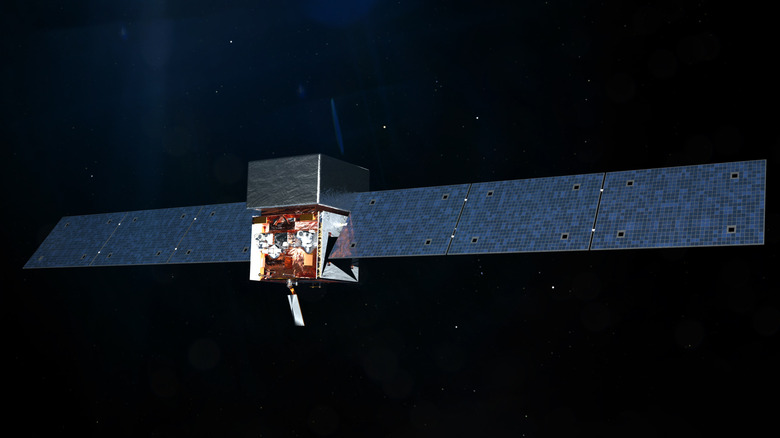A Supernova Could Help Uncover The Universe's Most Mysterious Substance
One of the biggest questions in the scientific world right now revolves around something we can't see, and can't directly detect in any other way either. Based on the movements of galaxies, astronomers know that there must be something with significant mass affecting their gravity, but they don't know what this substance is — or even if it is a substance at all. They call this unknown force dark matter.
Scientists typically try to study dark matter by looking at the universe on a large scale. The idea is that by using instruments like the Euclid space telescope, they can observe the movements of distant galaxies, and from these movements they can calculate mass and work out how much dark matter they contain.
However, astrophysicists at the University of California, Berkeley have a different approach they are working on. Published recently in the journal Physical Review Letters, one paper proposes making use of a nearby supernova to study dark matter in detail.
A supernova is an extremely dramatic event, when a star comes to the end of its life and runs out of fuel. Once it has burned through all its fuel the star collapses to a tiny core and then explodes in a huge outpouring of energy. In that outpouring of energy could be the clue to understanding dark matter, as scientists search these extreme conditions for evidence of a theoretical type of dark matter particle called an axion.
Finding a supernova
Scientists have been looking for axions since they were theorized in the 1970s. Today they are of most interest because they represent the most promising possibility of a "dark matter particle."
When a star goes supernova, it would produce huge numbers of axions, so the authors of the paper propose looking for a nearby supernova to try to observe the production of these axions using a powerful gamma ray telescope. A previous supernova, called supernova 1987A, occurred in a satellite galaxy of the Milky Way called the Large Magellanic Cloud. A gamma ray telescope was observing the supernova, but it wasn't powerful enough to capture what they were looking for.
"If we were to see a supernova, like supernova 1987A, with a modern gamma-ray telescope, we would be able to detect or rule out this QCD axion, this most interesting axion, across much of its parameter space — essentially the entire parameter space that cannot be probed in the laboratory, and much of the parameter space that can be probed in the laboratory, too," explained one of the paper's authors, Benjamin Safdi of University of California, Berkeley. "And it would all happen within 10 seconds."
The problem is that supernovas are hard to predict. Scientists can tell when a star is approaching a supernova status, but pinning down the exact time at which the event will occur is near impossible.
"I think all of us on this paper are stressed about there being a next supernova before we have the right instrumentation," Safdi said. "It would be a real shame if a supernova went off tomorrow and we missed an opportunity to detect the axion — it might not come back for another 50 years."
Dark matter and axions
Though no one has yet observed axions, there is good reason to think that they must exist. "It seems almost impossible to have a consistent theory of gravity combined with quantum mechanics that does not have particles like the axion," Safdi said.
The type that the researchers are interested in are called QCD axion, which are named for a force called quantum chromodynamics. In the paper, researchers propose that gamma rays would be produced during a supernova event as axions escape and are converted into high-energy rays.
The researchers used supercomputers to model what would happen during a supernova, finding that there should be a brief but significant burst of gamma rays for just 10 seconds as the star changes into a type called a neutron star. They were able to calculate the mass that axions would have to have to be detectable, helping them set a limit on what they can expect from detection of these particles.
They hope to use a powerful gamma ray telescope which is currently in orbit, called the Fermi Gamma-ray Space Telescope, to observe a future supernova.
"The best-case scenario for axions is Fermi catches a supernova. It's just that the chance of that is small," Safdi said. "But if Fermi saw it, we'd be able to measure its mass. We'd be able to measure its interaction strength. We'd be able to determine everything we need to know about the axion, and we'd be incredibly confident in the signal because there's no ordinary matter which could create such an event."


